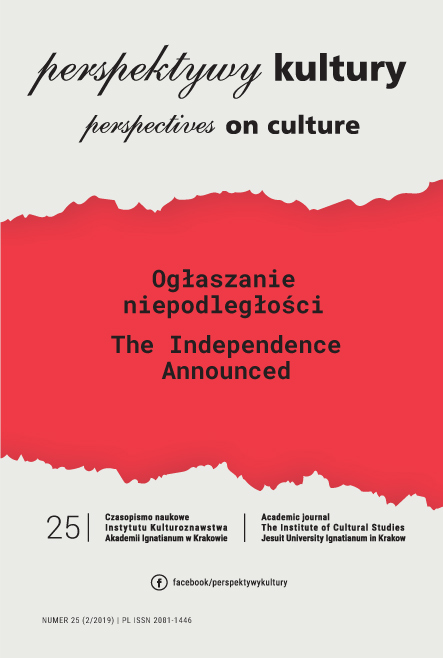Macro-prudential Policy and its Impact on the Reduction of Systemic Risk
Abstract
The main objective of this paper is a holistic representation of the idea of macro-supervision, pointing to the need for its implementation and demonstration based on research and historical data that macro-prudential policy can significantly prevent the materialization of systemic risk in the banking business. This means that it will be able to counteract this risk in both temporal and structural terms, translating into better functioning of the real economy, which the financial system primarily serves. The article will present the history of the idea of macro-supervision and its concept in the light of different economic schools. Next, the characteristics of the financial system, sources of systemic risk and macro-prudential policy objectives will be shown. Attention will also be given to the other objectives of this idea. In the next stage of work, a range of policy instruments will be presented.
References
Basel Committee on Banking Supervision, Bank for International Settlements, http://www.bis.org/bcbs/index.htm (access: 08.12.2018).
Basel Committee on Banking Supervision chronology, Bank for International Settlements, http://www.bis.org/about/chronology.htm?m=1%7C4%7C550 (access: 08.12.2018).
Bernanke B., Gertler M., Gilchrist S., The Financial Accelerator in a Quantitative Business Cycle Framework, “NBER Working Paper,” 1998, Iss. 6455.
Borio C., Towards a macro-prudential framework for financial supervision and regulation?, “BIS,” 2003, No. 128, p. 2, http://www.bis.org/publ/work128. pdf (access: 08.12.2018).
Burman L., Gale W., Gault S., Kim B., Nunns J., Rosenthal S., Financial transaction taxes in theory and practice, 2015, p. 10, http://www.brookings. edu/~/media/research/files/papers/2015/07/financial-tax-transactions/financial-transaction-taxes.pdf (access: 08.12.2018).
Columba F., Costa A., Kongsamut P., Lim C., Otani A., Saiyid M., Wezel T., Wu X., Macroprudential Policy: What Instruments and How to Use Them? Lessons from Country Experiences, MFW, 2011.
Crowe C., Dell’Ariccia G., Igan D., Rabanal P., Policies for macrofinancial stability: options to deal with real estate booms, International Monetary Fund, Staff Discussion Note, SDN/11/02, 2011.
Fisher I., The Debt-Deflation Theory of Great Depressions, “Econometrica,” 1933, Iss. 4.
Globalna architektura finansowa, European Central Bank, https://www.ecb. europa.eu/ecb/tasks/international/financialarchitecture/html/index. pl.html (access: 08.12.2018).
Iwonicz-Drozdowska M., Bankowość zagadnienia podstawowe, Poltext, Warszawa 2010.
Jaworski W., Współczesny bank, 2nd ed., Poltext, Warszawa, 2000.
Lucas R., On the Mechanics of Economic Development, “Journal of Monetary Economics,” 1998.
Macroprudential Policy – An Organizing Framework, International Monetary Fund, 2011, https://www.imf.org/external/np/pp/eng/2011/031411.pdf (access: 09.12.2018).
Niedziółka P., Analiza potencjalnych korzyści oraz negatywnych konsekwencji wdrożenia norm LCR oraz NSRF w bankach europejskich, SGH, http:// kolegia.sgh.waw.pl/pl/KES/kwartalnik/Documents/PN231.pdf (access: 01.02.2018).
Palley T., Chilean Unremunerated Reserve Requirement Capital Controls as a Screening Mechanism, Waszyngton, strona Thomasa Palleya, http://www. thomaspalley.com/docs/articles/international_markets/chilean_reserve. pdf (acess: 14.12.2019).
Robinson J., The Rate of Interest and Other Essays, Macmillan, London 1952.
Screening Mechanism, Washington DC, Thomas Palley’s website, http://www. thomaspalley.com/docs/articles/international_markets/chilean_reserve. pdf (access: 08.12.2019).
Spicka P., Macroprudential oversight in Germany – overview, Deutsche Bundesbank 2015.
The Act of 29 VIII 1997, Article 3 item 1, the Internet System of Legal Acts, http://isap.sejm.gov.pl/DetailsServlet?id=WDU19971400938 (access: 12.08.2018).
The Act of 5 August 2015, Macroprudential supervision.
Vulnerabilities Assessment, Financial Stability Board, http://www.fsb.org/what-we-do/vulnerabilities-assessment/ (access: 08.12.2018).
Copyright (c) 2019 Jesuit University Ignatianum in Krakow

This work is licensed under a Creative Commons Attribution-NoDerivatives 4.0 International License.
Autor, zgłaszając swój artykuł, wyraża zgodę na korzystanie przez Wydawnictwo Uniwersystet Ignatianum z utworu na następujących polach eksploatacji:
- utrwalania utworu w formie papierowej, a także na nośniku cyfrowym lub magnetycznym;
- zwielokrotnienia utworu dowolną techniką, bez ograniczenia ilości wydań i liczby egzemplarzy;
- rozpowszechniania utworu i jego zwielokrotnionych egzemplarzy na jakimkolwiek nośniku, w tym wprowadzenia do obrotu, sprzedaży, użyczenia, najmu;
- wprowadzenia utworu do pamięci komputera;
- rozpowszechniania utworu w sieciach informatycznych, w tym w sieci Internet;
- publicznego wykonania, wystawienia, wyświetlenia, odtworzenia oraz nadawania i reemitowania, a także publicznego udostępniania utworu w taki sposób, aby każdy mógł mieć do niego dostęp w miejscu i czasie przez siebie wybranym.
Wydawca zobowiązuje się szanować osobiste prawa autorskie do utworu.





